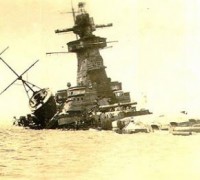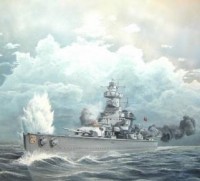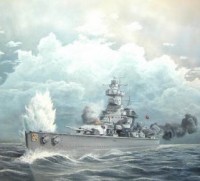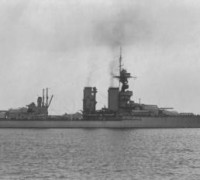RAIDER ADMIRAL GRAF SPEE * 8 SHIPS SUNK - BATTLE OF THE RIVER PLATE
19)GRAF SPEE EAGLE RECOVERED
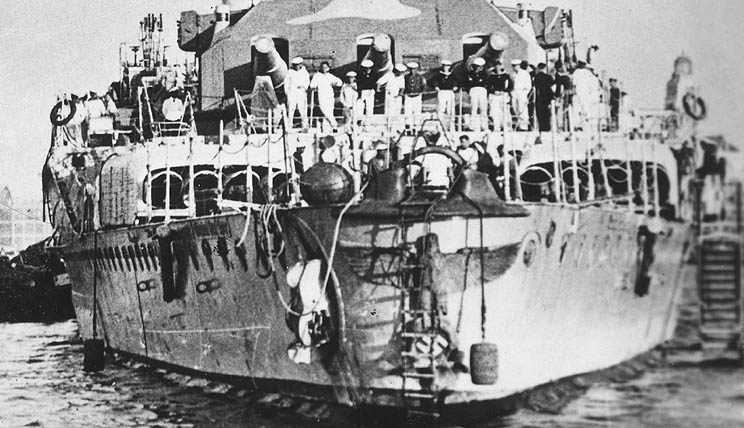
World War Two was never as close to land in South America as on 13 December 1939, when three Royal Navy cruisers challenged Germany's Admiral Graf Spee off the coast of Uruguay.
A battle still goes on 75 years later.
This time, however, the matter in dispute is not the control of the South Atlantic but rather a controversial bronze eagle, weighing between 350 and 400kg, that could fetch millions of dollars at auction.
The spread eagle with a swastika under its talons was recovered off the coast of Uruguay in 2006 by private investors.
It was part of the stern of the Graf Spee, which was once one of the most modern battleships in the world.
The cruiser was scuttled by its captain in Montevideo Bay soon after the Battle of the River Plate. The captain had feared that if captured, the British would steal information about its state-of-the-art technology.
The bronze eagle, which was one of the most remarkable symbols of the German Third Reich, now rests at a warehouse guarded by the Uruguayan navy.
After a long battle in court, the Supreme Court ruled that the Uruguayan state was the piece's rightful owner, but it also decided that the private salvage company should get 50% of the profits if the eagle was sold.
Businessman Alfredo Etchegaray, one of the men who led the operation to recover the eagle, told the BBC that the eagle could be worth up to $15m (£9.5m; €12m).
He wants the government to make a replica and then sell the original.
"This way we would be compensated for our work and Uruguay would be able to spend its part on education, technology or better equipment for the navy. But having the eagle in a box doesn't benefit anybody."
"We have been in touch with auction houses that say this kind of controversial piece usually sells well," he added.
But so far, the Uruguayan government has not decided what to do with it.
Although the piece was briefly exhibited in the lobby of a hotel in Montevideo soon after it was recovered, it has been under the custody of the Uruguayan army for the past nine years.
Gaston Jaunsolo, an army spokesman, told the BBC that the eagle was cared for with "strict security measures, with proper temperature and humidity controls".
Local media reported earlier this year that the eagle had been kept stored in a wooden box at an old navy building with fewer than a dozen workers to take care of the whole complex.
German fears
The eagle has not only witnessed battles in the sea and in the courts, it also has a long record of diplomatic disputes.
Soon after the piece was first displayed in Montevideo, the German embassy in Uruguay complained and asked the government to avoid exhibiting "Nazi paraphernalia".
When Guido Westerwelle, who was then foreign minister of Germany, visited Uruguay in 2010, he requested that it not be sold to private collectors, fearing that the eagle could end up in the hands of Nazi fanatics.
"We want the remains of the Graf Spee to be dealt with properly," he said.
"We want to prevent wreckage from the ship, in particular the Nazi symbols, from landing on the market for military insignia."
The relatives of those who survived the Battle of the River Plate will mark the 75th anniversary of the fight with events in Uruguay and Argentina, where the captain of the Graf Spee killed himself in 1939.
The memory of the battle is still fresh in South America, where many German officers found refuge after the war.
It is also part of the Uruguayan landscape, as the eagle is not the only wreckage that was recovered from the Graf Spee, that still rests in the waters of Montevideo.
The battleship's telemeter, a device used to measure distances, is currently on display at the entrance of the harbour of Montevideo.
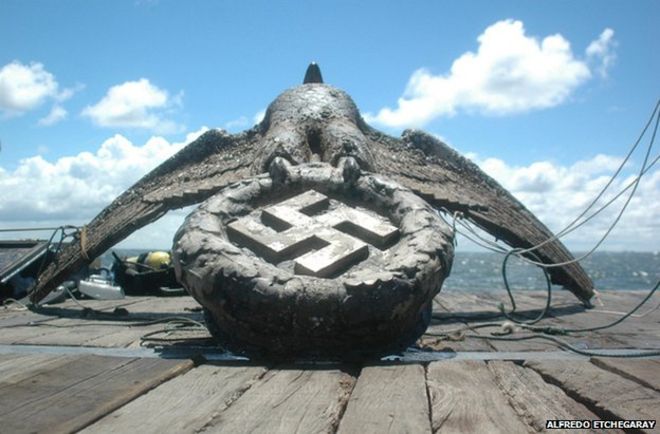
'Part of our story'
All parties seem to agree that exhibiting a bronze eagle with a Nazi swastika under its claws would not be as easy as displaying a piece of navigation technology.
"It could hurt the sentiments of some people," Captain Jaunsolo said.
But Mr Etchegaray says that exhibiting a copy of the eagle and financing a new museum with the profits of an auction would help Uruguayans understand how close they were to taking part in World War Two.
"There are also museums about the Spanish Inquisition and even Nazi concentration camps are visited," Mr Etchegaray argues.
"This eagle is part of our story and we should remember, display and study our history to avoid repeating mistakes," he says.
